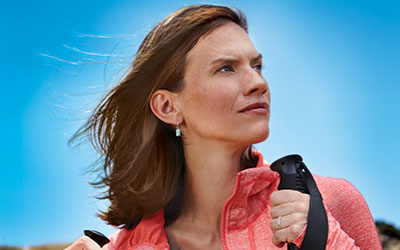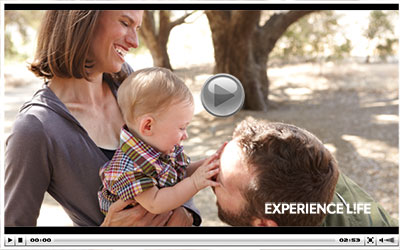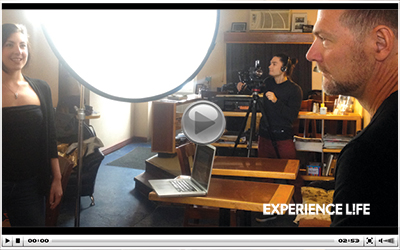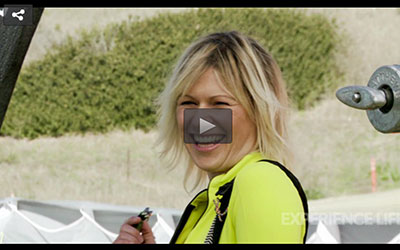Jennifer Pharr Davis has trekked more than 12,000 miles on six continents. All the more impressive considering the 30-year-old’s passion for hiking began on a whim.
“I grew up in the mountains of western North Carolina and went hiking with my family as a child, but I certainly never planned to do anything long term in the wilderness,” says the 2012 National Geographic Adventurer of the Year. “But when I graduated from college, I wanted to have one last adventure before starting a traditional career path. So I decided I would take on the 2,180-mile Appalachian Trail.”
The experience proved transcendental. It taught Pharr Davis the value of simplicity, an appreciation for solitude, and the rewards of letting thoughts wander freely, without the cacophony that accompanies the day-to-day bustle of civilization.
Wanting to go deeper, Pharr Davis decided to devote her life to hiking, scoring seasonal jobs to save money, and then taking long breaks to hike the world’s most arduous trails. She currently holds endurance records on three separate trails, including two on the Appalachian Trail, where she set the women’s endurance record in 2008 (completing the trail in 57 days, averaging 38 miles a day); and the overall endurance record for both men and women in 2011 (completing the trail in 46 days, 11 hours, and 20 minutes, averaging 47 miles a day).
Today she owns the Blue Ridge Hiking Co., in Asheville, N.C., where she lives with her husband, Brew, and her 11-month-old daughter, Charlotte. She is the author of two books, Becoming Odyssa and Called Again, and she is currently on a 48-state book tour with her daughter and husband in tow.
With all this going on, how does she relax? “Honestly,” Pharr Davis says, “I go out into the woods.”
Experience Life | You’ve loved hiking since college. What inspired you to make it competitive?
Jennifer Pharr Davis | It came when I got married. I wanted to keep doing the trails, but I didn’t want to be away from my husband. He wanted me to continue pursuing my passion, though, so he volunteered to be my logistical support (where he would meet me at road crossings and give me more food or gear, whatever I might need for the next stretch of trail). And I thought, “That’s awesome,” because it meant that we could be together and I’d also heard that people who’d set the endurance record before had received logistical support along the way.
EL | After you set the women’s record in 2008, you went for the overall record a few years later. Why?
JPD | When I came down that last mountain in 2008, I grew very frustrated with myself because I realized that I had put parameters on what I could achieve before I even started out — I’d said to myself that, you know, my best only has to be the women’s best, so that’s what I was going to do.
But having done the trail once, I now completely believed that I had what it took to set the overall record. I knew I could do it. That being said, my husband — after 57 days of running my errands and delivering supplies — was not that excited about helping me again.
EL | How did these two big adventures affect your relationship?
JPD | During the first hike it was challenging because we were newlyweds and we were trying something that tested our relationship. The trail really enhanced our communication and trust and teamwork, but we had to work out a lot of kinks.
Things were much more fluid when we went back in 2011. We both had a better idea of what to expect. When we finished the trail the second time, I felt a lot of emotion; I remember thinking I had never been so in love with my husband.
Brew and I joke that the trail is our relationship counselor. Going out as a couple provides time to talk and think and work through things. I think so many relationship issues that arise today come up because people are so busy and it’s hard to connect. So by the time a couple is able to talk about an issue, it’s so big that it’s almost impossible to work through it.
EL | As you write in your book, hiking, by definition, is simply walking in a natural setting — yet it’s so much more than that. What makes the trail so therapeutic?
JPD | Nature is the ideal setting to work through life’s issues. Part of it is that there are fewer interruptions. You don’t have bright lights or loud noises and you’re not multitasking as much. It’s very simple. The distractions on the trail are very organic: It’s wildlife fighting in the forest or stopping at a waterfall. Even if you get caught in a rainstorm, there’s something very therapeutic about the water just rinsing you off. It feels like it’s taking away all life’s worries as it runs down your face.
Before I started hiking I was really worried about being bored and lonely. But then, along the way, I learned to appreciate the solitude and the fact that I can just think my thoughts through to completion. I think we have a lot of built-up thoughts and emotions and we don’t have time to work through them because we’re so overstimulated on a day-to-day basis.
And the motion of walking is very repetitive. It lends itself to putting you into an almost trancelike state — perhaps similar to meditation — that is very healing.
EL | What wisdom have you gained on the trail?
JPD | I learned to value simplicity. Before the trip I thought I needed stuff to be happy and successful. The trail taught me that I could be content with just the items I carried in a pack on my back.
It also made me feel beautiful and helped my self-esteem and self-confidence. That doesn’t seem to make a lot of sense, because I was dirty and stinky and covered in bug bites, but for five months I didn’t wake up every morning and look in the mirror. I wasn’t worried about my appearance and so I began to see myself in a new way — and to think about beauty in a new way. I began to see my reflection through my interactions with other people on the trail. So if I was kind, if I smiled at someone when they needed a smile, then I felt beautiful. And I certainly had a new appreciation and respect for my body after it traveled over 2,000 miles by foot. All those realizations really changed who I was as a person.
EL | What advice would you give to someone who wants to follow in your path?
JPD | I would say don’t be afraid to get started. I think the wilderness is becoming this very unknown entity, and a lot of people have fears and hesitations, but it’s where we belong.
Once you get out there, the best advice I can give is to be really, really flexible and really, really stubborn at the same time. If you’re really rigid and unable to change, then you’re not going to be successful in the wilderness. But you also have to be stubborn. If you’re not, you’re going to want to go home when things get hard. So it’s this interesting process of bending and not breaking when you go out there.




This Post Has 0 Comments